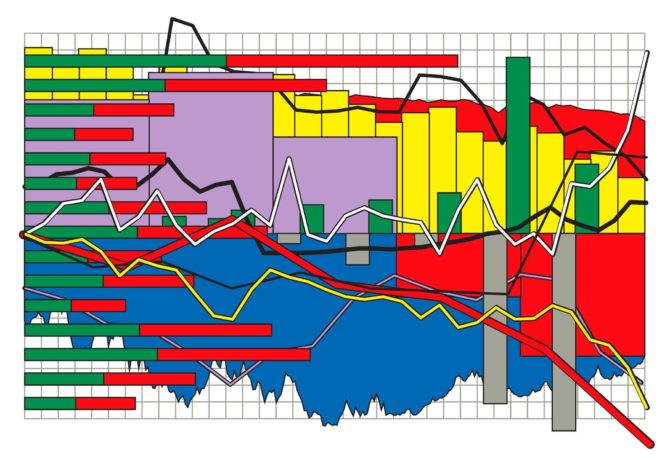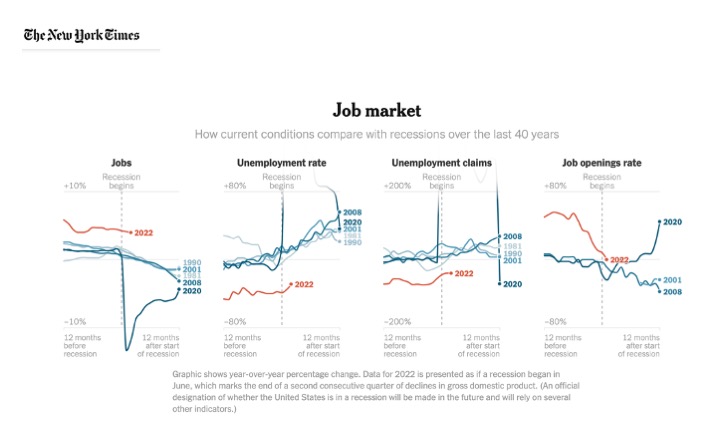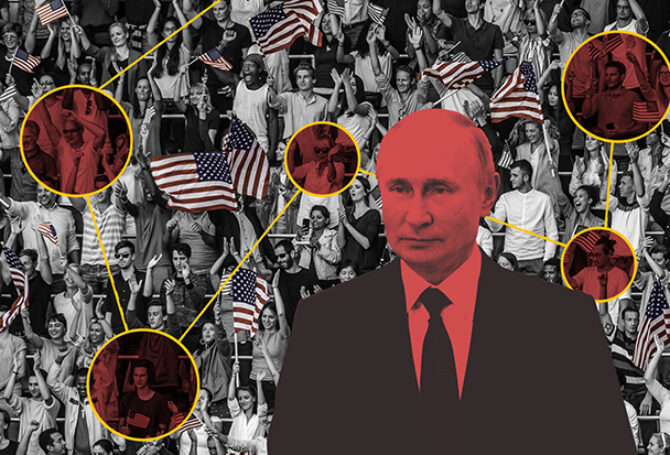
Conflicting Data Is More Confusing Than Convincing
It’s hard to avoid news about the economy. It’s even harder to understand the meaning of conflicting economic indicators.
Inflation is too high. Unemployment is at a 50-year low. The economy is technically in recession after two quarters of negative growth. American consumers are picking their spots but still spending money on plane tickets and restaurant meals.
The most puzzling economic conundrum centers on employment. The economy has added 6 million jobs in the last year as the economy rebounded from the depths of the pandemic. While layoffs are beginning to occur, there are still 11 million job openings that employers can’t fill. There simply aren’t enough nonworking people to fill them.
Various reasons are offered for the worker shortage. The pandemic persuaded a significant number of older workers to retire. COVID-19 resulted in 1 million US deaths, a quarter of which were men and women of pre-retirement age. Long COVID has made it hard for some willing workers to have the stamina to return to full-time work. And fewer migrant workers have been added to US payrolls.
There is no quick, unequivocal answer as to whether the economy is in good shape or bad, is going up or down or is in recession or not.
Even all that doesn’t fully explain why there are so many job openings. Worker shortages have prompted higher wages, more generous benefits, flexible work scheduling and signing bonuses. The shortage persists. Data indicates the percentage of adults in the workforce still lags the pre-pandemic percentage.
Workforce observers say the challenges posed by the pandemic have persuaded many workers to seek jobs where their labor is respected and their voices are heard. Based on what workers in stressful fields such as health care, teaching and driving large trucks say, some jobs just aren’t worth what they pay. That’s why 15,000 Minnesota nurses staged a three-day strike and the head of the Portland firefighters union endorsed the opponent of his Portland City Council boss because of dissatisfaction with the progress of recruiting 300 more firemen.
Supply chain disruptions play a huge role in economic bumps and grinds. First, it was ships waiting to unload in clogged ports. When longshoremen agreed to work around the clock, cargo still was stymied because there weren’t enough truck drivers to move the containers. Disruptions continue because of a Russian invasion of Ukraine, an unprecedented heat wave in China and a pending US freight rail strike.
Stubbornly high inflation (it rose to 8.3 percent year over year in August) has stiffened the resolve of the Federal Reserve to keep raising interest rates, which in turn spooked the stock market that took at 1,000-point dive this week. No one can say for sure whether the economy is about to head up or down, though most motorists are relieved gas prices have dropped to an average of $4 per gallon.
So, there is no quick, unequivocal answer as to whether the economy is in good shape or bad, is going up or down or is in recession or not. Adding to the confusion is the looming election that will feature exaggerated statements that suit a political argument, not reflect actual, unfolding facts.
In their latest quarterly forecast, Oregon state economists were predictably equivocal. They said a recession affecting Oregon next year was definitely a 50-50 toss-up. The September and October labor and inflation reports can be expected to be equally equivocal.
As Yogi Berra most likely said, you won’t know until you know.
There’s a 50-50 chance that’s true.





